http://www.rhci-online.net/radiogram/radiogram.htm
http://www.rhci-online.net/radiogram/radiogram.htm
|
RSID: <<2018-08-01T20:31Z MFSK-32 @ 6070000+1500>>
START
IBC - ITALIAN BROADCASTING CORPORATION
mail: ibc@europe.com
"DUOMO DI MILANO" CATHEDRAL - MILAN - ITALY
|
|
|
RSID: <<2018-08- 04T15:30Z MFSK-64 @ 9400000+1500>>You can see street life, including trains, via this webcam in Mierlo-Hout, Netherlands ... Sending Pic:129x87C; 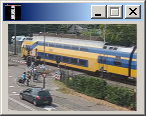
|
|
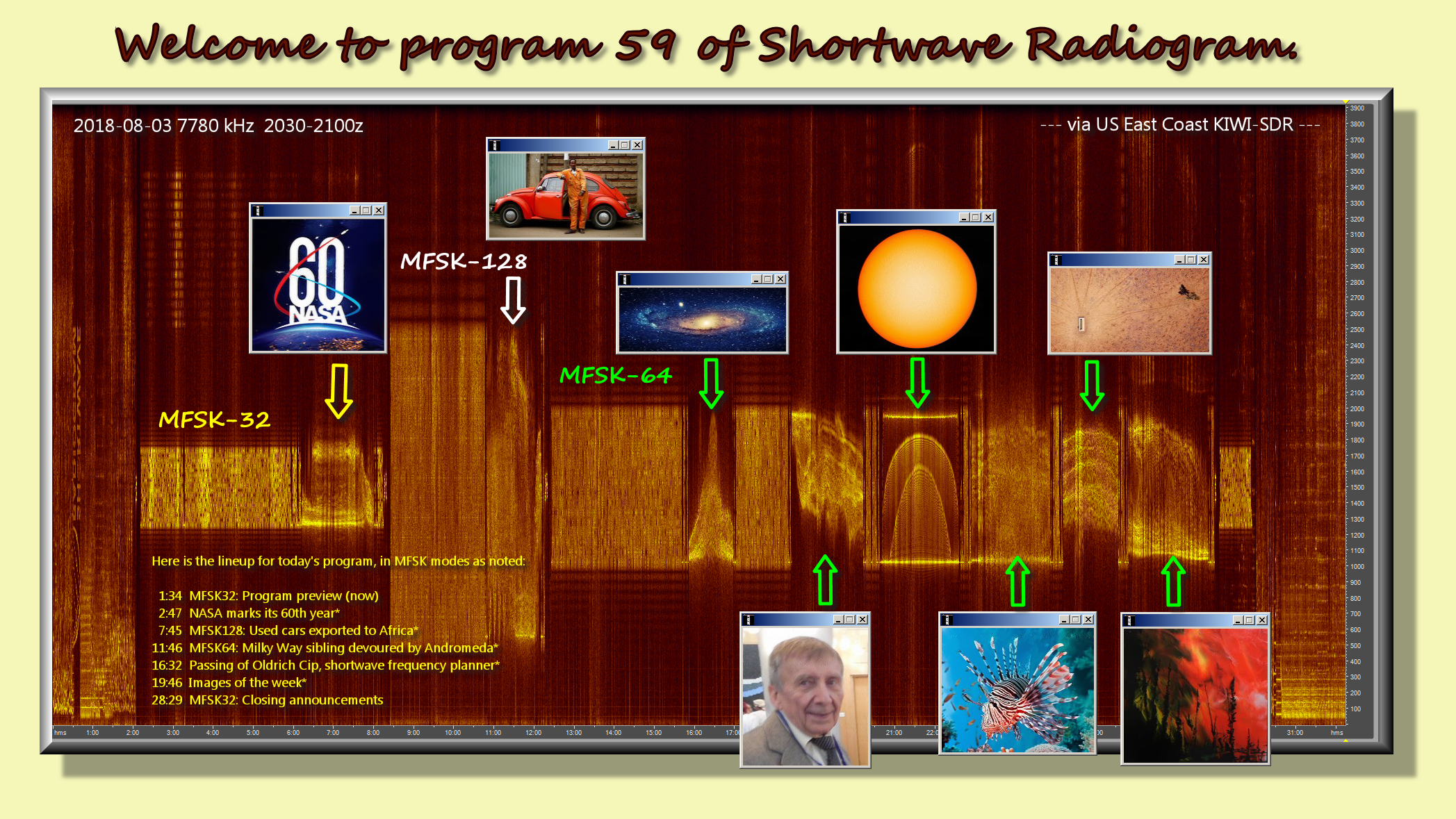
RSID: <<2018-08-03T20:31Z MFSK-32 @ 7780000+1500>>
Welcome to program 59 of Shortwave Radiogram.
I'm Kim Andrew Elliott in Arlington, Virginia USA.
Here is the lineup for today's program, in MFSK modes as noted:
1:34 MFSK32: Program preview (now)
2:47 NASA marks its 60th year*
7:45 MFSK128: Used cars exported to Africa*
11:46 MFSK64: Milky Way sibling devoured by Andromeda*
16:32 Passing of Oldrich Cip, shortwave frequency planner*
19:46 Images of the week*
28:29 MFSK32: Closing announcements
* with image(s)
Please send reception reports to radiogram@verizon.net
And visit http://swradiogram.net
Twitter:
@SWRadiogram
NASA Marks 60 Years Since Legal Inception
VOA News
29 July 2018
America's dream of space exploration took its first official step
60 years ago Sunday when President Dwight Eisenhower signed a law
authorizing the formation of NASA - the National Aeronautics and
Space Administration.
Although humanity had been staring at the stars and wondering
since they were living in caves, it took the Cold War to fire man
into space.
The world was stunned when the Soviet Union on October 4, 1957,
launched Sputnik -- the first man-made object to orbit the Earth.
The United States was humiliated at being caught short -- not
just technologically, but militarily.
Eisenhower ordered government scientists to not only match the
Soviets in space, but beat them.
NASA and its various projects -- Mercury, Gemini and Apollo --
became part of the language.
Just 11 years after Eisenhower authorized NASA, American
astronaut Neil Armstrong walked on the moon. Six year later, an
Apollo spacecraft linked with a Soviet Soyuz in orbit, turning
rivalry into friendship and cooperation.
NASA followed that triumph with the space shuttle, Mars landers
and contributions to the International Space Station. A manned
mission to Mars is part of NASA's future plans.
Last month, President Donald Trump called for the formation of a
"space force" to be the sixth U.S. military branch.
NASA officially celebrates its 60th anniversary on October 1 -
the day the agency formally opened for business.
https://www.voanews.com/a/nasa-marks-60-years-since-legal-inception/4505363.html
See also:
https://www.dw.com/en/six-key-moments-from-nasas-60-year-history/g-44870624
Image: NASA 60th anniversary logo ...
Sending Pic:190x190C;
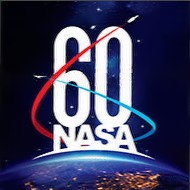
Shortwave Radiogram now changes to MFSK128 ...
RSID: <<2018-08-03T20:37Z
MFSK-128 @
7780000+1500>>
This is Shortwave Radiogram in MFSK128
Please send reception reports to radiogram@verizon.net
From Deutsche Welle:
Is Africa becoming the world's dumping ground for dirty diesel
vehicles?
As emission regulations become stronger for new vehicles in
industrialized countries, cars as old as 25 years no longer
able to meet emission standards are being exported to
Africa. Air quality is suffering as a result.
Sophie Mbugua
27 July 2018
Any child playing at the Uhuru garden - a recreation park in the
middle of the Kenyan capital Nairobi - is oblivious to the health
dangers in the air around him or her. But that air is laden with
toxic pollutants, which have become a leading cause of
respiratory disease in Kenyan cities.
According to the World Health Organization, 15,000 children under
five died each day in 2016 due to respiratory disease.
But the vehicles that contribute a large part of that pollution
trace a long path to Africa.
As emission regulations become stricter in the European Union,
Japan, and the United States, cars no longer able to meet current
standards are exported to other regions, including Africa.
In Africa, 25 countries have placed a maximum age limit on used
car imports. But due to weak enforcement, cars as old as 25 years
are sold in Africa.
A recent report from New Delhi-based Centre for Science and
Environment indicates that Germany and China account for 14
percent of car imports to Africa, while Japan and the US account
for 15 percent.
As the population in African cities grows, unreliable public
transport systems mean demand for cars is increasing. But low
purchasing power, lack of stringent emission controls, and poor
fuel quality have contributed to an influx of used cars that have
been pushed out of industrialized countries by more stringent
emission rules.
Dieselgate goes global
The Dieselgate scandal was unearthed in late 2015 when German
automaker Volkswagen was found to have intentionally programmed
its diesel engines to show lower-than-actual emission of
pollutants.
Installed software allowed Volkswagen cars to meet the emission
standards during laboratory testing. However, on the road, the
same cars emitted up to 40 times more nitrogen dioxide and
nitrogen oxides (NOx), a major air pollutant.
In the wake of the Dieselgate scandal, the European Union
introduced stringent measures to ensure cars comply with the EU
emission standards.
"Before being released to the market, new car models are now
tested on-road in addition to the standard laboratory emission
testing," Peter Mock, EU regional lead at the International
Council on Clean Transportation, told DW.
On-road inspections check nitrogen oxide, particulate matter, and
carbon monoxide levels, while hydrocarbon emission levels are
tested in the laboratory, Mock explained.
About 11 million Volkswagen cars were distributed globally
between 2009 and 2015.
Backlash around Dieselgate has caused the value of older diesel
cars in Europe to plummet. Trade - both legal and illegal - is
now bringing those dirty diesels to Eastern Europe and beyond.
What goes in our air?
Vehicle emissions include toxic chemicals, heat-trapping
greenhouse gases and fine particulate matter, which impact public
health and heighten climate change risks.
Vehicle engine combustion and fuel evaporation processes release
dangerous gases such as carbon monoxide, sulfur dioxide,
ground-level ozone (also known as smog) and NOx. Cars and trucks
also emit lead and other toxic pollutants such as benzene and
formaldehyde.
World Health Organization figures show that globally, around 7
million people die annually from exposure to polluted air.
Gerphas Opondo, executive director of the Nairobi-based
Environmental Compliance Institute, warns that the transport
sector is becoming a major source of air pollution in African
cities.
"Cities in Africa have high particulate matter, hydrogen oxide,
hydrocarbon, and carbon monoxide concentrations, recorded along
busy roads and intersections," he explained.
Apart from deaths due to air pollution, many more are sickened.
Research indicates that of the 4.2 million annual global chronic
respiratory diseases, nearly 3.3 million occur in low- or
middle-income countries. This includes cardiovascular and
respiratory disease such as stroke and asthma, as well as
increased risk of cancer.
Lack of standards and dirty fuel
Jane Akumu, air quality and mobility program officer at UNEP,
told DW that a major problem is how vehicle emissions standards,
tough emission inspection systems, and clean automotive fuels are
lacking in the majority of African countries.
"Most African countries are yet to adopt the euro 4 standards,
which were required in Europe in 2006," she explained.
"High sulfur levels in diesel are also deterring the efficiency
of emission technologies in Africa," Akumu continued.
Low-quality, harmful fuels categorized as illegal waste are
exported to Africa. In addition a lack of refineries, cleaner
diesel is considered too expensive by some governments.
The majority of African countries use fuel with sulfur levels of
2,500 to 10,000 ppm (parts per million).
Combustion of highly sulfurous fuels results in emissions of
sulfur dioxide, a major air pollutant.
Akumu stressed the need to utilize cleaner fuel to effectively
implement cleaner vehicle technology. "Even if Africa imports a
high-quality car, the maximum environmental benefits are not
realized due to low-quality fuel," she pointed out.
To curb emissions, UNEP is helping Africa implement the euro 4
standards that require 50 ppm of sulfur in diesel cars, which is
the euro 4 standard. "Europe and Japan are at 10 ppm," she noted.
There is progress, as 11 African countries, six of them in East
Africa, have adopted sulfur fuel standards of 50 ppm.
Beyond that, the Economic Community of West African States
(ECOWAS) is working with UNEP to harmonize emission and fuel
standards in West Africa.
But standards will have to be accompanied by rigorous enforcement
in order to have a positive impact on the looming air pollution
crisis facing many African cities.
https://www.dw.com/en/is-africa-becoming-the-worlds-dumping-ground-for-dirty-diesel-vehicles/a-44833036
Sending Pic:221x121C;
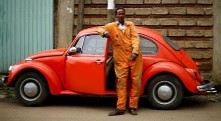
Shortwave Radiogram now changes to MFSK64 ...
RSID: <<2018-08-03T20:41Z MFSK-64 @ 7780000+1500>>
This is Shortwave Radiogram in MFSK64
Please send reception reports to radiogram@verizon.net
From Futurity.org
The Milky Way had a sibling but Andromeda ate it
Morgan Sherburne
29 July 2018
Scientists have deduced that the Andromeda galaxy, our closest
large galactic neighbor, shredded and cannibalized a massive
galaxy two billion years ago.
Even though it was mostly shredded, this massive galaxy left
behind a rich trail of evidence: an almost invisible halo of
stars larger than the Andromeda galaxy itself, an elusive stream
of stars, and a separate enigmatic compact galaxy, M32.
Discovering and studying this decimated galaxy will help
astronomers understand how disk galaxies like the Milky Way
evolve and survive large mergers.
This disrupted galaxy, named M32p, was the third-largest member
of the Local Group of galaxies, after the Milky Way and Andromeda
galaxies. Using computer models, Richard D'Souza and Eric Bell of
the University of Michigan's astronomy department were able to
piece together this evidence, revealing this long-lost sibling of
the Milky Way. Their findings appear in Nature Astronomy.
'Eureka!'
Scientists have long known that this nearly invisible large halo
of stars surrounding galaxies contains the remnants of smaller
cannibalized galaxies. A galaxy like Andromeda was expected to
have consumed hundreds of its smaller companions. Researchers
thought this would m 5e it difficult to learn about any single
one of them.
Using new computer simulations, the scientists were able to
understand that even though Andromeda consumed many companion
galaxies, most of the stars in the Andromeda's outer faint halo
came from shredding a single large galaxy.
"It was a 'eureka' moment. We realized we could use this
information of Andromeda's outer stellar halo to infer the
properties of the largest of these shredded galaxies," says lead
author D'Souza, a postdoctoral researcher.
"Astronomers have been studying the Local Group-the Milky Way,
Andromeda, and their companions-for so long. It was shocking to
realize that the Milky Way had a large sibling, and we never knew
about it," says coauthor Bell, professor of astronomy.
Meet M32p
This galaxy, called M32p, which the Andromeda galaxy shredded,
was at least 20 times larger than any galaxy which merged with
the Milky Way over the course of its lifetime. M32p would have
been massive, making it the third largest galaxy in the Local
Group after the Andromeda and the Milky Way galaxies.
This work might also solve a long-standing mystery: the formation
of Andromeda's enigmatic M32 satellite galaxy, the scientists
say. They suggest that the compact and dense M32 is the surviving
center of the Milky Way's long-lost sibling, like the
indestructible pit of a plum.
"M32 is a weirdo," Bell says. "While it looks like a compact
example of an old, elliptical galaxy, it actually has lots of
young stars. It's one of the most compact galaxies in the
universe. There isn't another galaxy like it."
Their study may alter the traditional understanding of how
galaxies evolve, the researchers say. They realized that the
Andromeda's disk survived an impact with a massive galaxy, which
would question the common wisdom that such large interactions
would destroy disks and form an elliptical galaxy.
The timing of the merger may also explain the thickening of the
disk of the Andromeda galaxy as well as a burst of star formation
two billion years ago, a finding that French researchers reached
independently earlier this year.
"The Andromeda Galaxy, with a spectacular burst of star
formation, would have looked so different 2 billion years ago,"
Bell says. "When I was at graduate school, I was told that
understanding how the Andromeda Galaxy and its satellite galaxy
M32 formed would go a long way towards unraveling the mysteries
of galaxy formation."
The researchers say they could use the method in this study on
other galaxies, permitting measurement of their most massive
galaxy merger. With this knowledge, scientists can better
untangle the complicated web of cause and effect that drives
galaxy growth and learn about what mergers do to galaxies.
Source: University of Michigan
https://www.futurity.org/andromeda-m32p-galaxy-milky-way-1822952-2/
Image: The Andromeda galaxy ...
Sending Pic:240x92C;

This is Shortwave Radiogram
Please send reception reports to radiogram@verizon.net
From Radio World:
Oldrich Cip, HFCC Founder, Dies
He established the High Frequency Coordination Conference in 1991
31 July 2018
The High Frequency Coordination Conference (HFCC) has announced
that its founder and vice chairman Oldrich Cip passed away on
July 27.
According to the HFCC's statement, Cip was involved in radio
since he was a child, first as an amateur radio hobbyist, later
as a staff member of Czechoslovak and then Czech Radio in the
international broadcasting departments.
As a college graduate in the field of Humanities, he spent most
of his working life as a frequency manager and schedule planner.
For a number of years he hosted a DX program on Radio Prague
under the pen name Peter Skala.
After the end of the Cold War, Cip believed that broadcasters
from both sides of the conflict should come together and develop
a new system of planning and coordination for shortwave
broadcasting. This led to the establishment of the HFCC in 1991.
Cip was chairman of the HFCC until 2015, and served as the
group's vice chairman thereafter.
Cip lived in Prague, although he frequently spent time in his
country house, where he enjoyed woodworking, guitar and country
music, vintage graphics, photography and time with his family.
Cip was married with two adult sons, Oldrich Jr. and Vladislav.
Vladislav is the HFCC secretary who manages the day-to-day
operations of the organization.
https://www.radioworld.com/news-and-business/oldrich-cip-hfcc-founder-dies
See also
https://www.facebook.com/nasbshortwave/posts/2194873747209059
Sending Pic:180x198C;
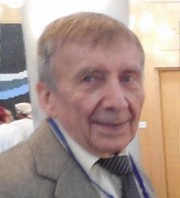
This is Shortwave Radiogram
Please send reception reports to radiogram@verizon.net
THIS WEEK'S IMAGES
The sun without a single spot on July 30, as Solar Cycle 24 nears
its end. From
wapo.st/2LZI9tc ...
Pic:222x181C;
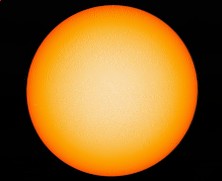
The lionfish is attractive, but it is also an invasive species in
the Caribbean. From bbc.in/2LZ9Wd9 ...
Sending Pic:219x179C;

A lone tree stands near a water trough in a drought-affected
paddock located on the outskirts of the town of Walgett, in New
South Wales, Australia. From
bit.ly/2viJmlV ...
Sending Pic:228x121C;
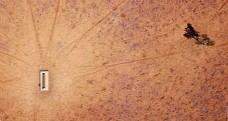
Our painting of the week is Wildfire 6 by Chad Rice. From
bit.ly/2KnwYFX ...
Sending Pic:207x193C;
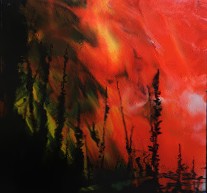
Shortwave Radiogram now returns to MFSK32 ...
RSID: <<2018-08-03T20:58Z
MFSK-32 @
7780000+1500>>
This is Shortwave Radiogram in MFSK32
Please send reception reports to radiogram@verizon.net
Transmission of Shortwave Radiogram is provided by:
WRMI, Radio Miami International, http://wrmi.net
and
Space Line, Bulgaria, http://spaceline.bg
Please send reception reports to radiogram@verizon.net
And visit http://swradiogram.net
Twitter:
@SWRadiogram
I'm Kim Elliott. Please join us for the next Shortwave
Radiogram.
http://www.rhci-online.net/radiogram/radiogram.htm
|
QTH: |
D-06193 Petersberg (Germany/Germania) |
|
|
Ant.: |
Dipol for 40m-Band & Boomerang Antenna 11m-Band |
|
|
RX for RF: |
FRG-100B + IF-mixer & ICOM IC-R75 + IF-mixer |
|
|
Software IF: |
con STUDIO1 - Software italiano per SDR [S-AM-USB/LSB] + HDSDR 2.76 stable [2017-02-02] - for scheduled IF-recording |
|
|
Software AF: |
Fldigi-4.00.12 + flmsg-4.0.3 images-fldigifiles on homedrive.lnk |
|
|
OS: |
German XP-SP3 with support for asian languages |
German W7 32bit + 64bit |
|
PC: |
MEDION Titanium 8008 (since 2003) [ P4 - 2,6 GHz] |
MSI-CR70-2MP345W7 (since2014) [i5 -P3560 ( 2 x 2,6GHz) ] |
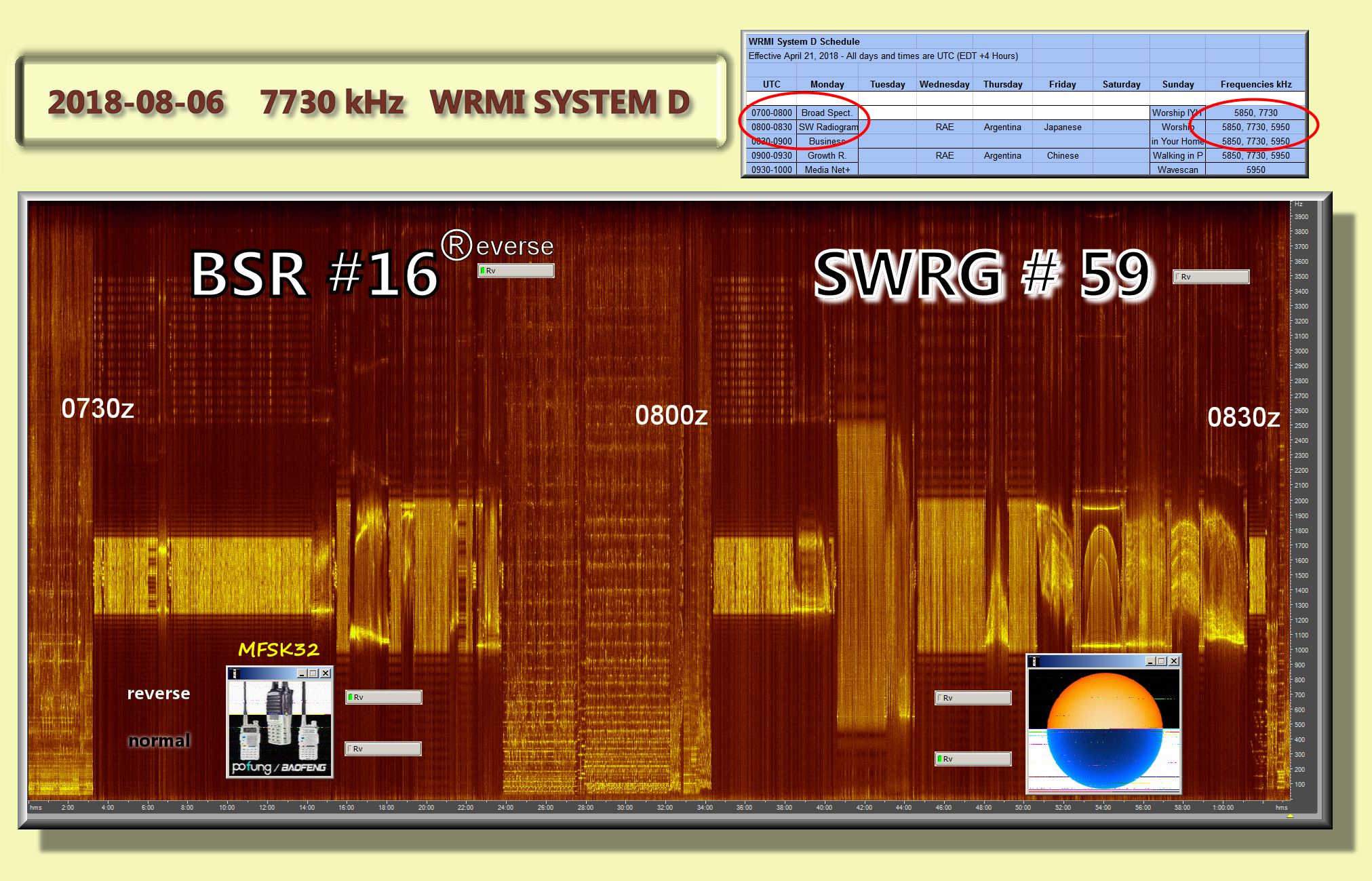
RSID: <<2018-08-06T07:30Z
MFSK-32
@
7730000+1500>>
Welcome to the BSR Radiogram from BroadSpectrumRadio and KG5JST
Produced by James M. Branum
www.broadspectrumradio.com
August 6, 2018
QSL reports are welcome at
broadspectrumradio@gmail.com
RSID: <<2018-08-06T07:31Z
MFSK-32
@
7730000+1500>>
RSID: <<2018-08-06T07:31Z MFSK-32 @ 7730000+1500>>
And now it’s time for some commentary, some thoughts from myself about ham
radio. Specifically about its future.
While there are many new hams being licensed each year, it is also true that the
majority of active hams today are getting older and older. Some people, who I
call the grumpy doomsdayers, insist that the problem is cultural in nature, that
younger people are lazy and
unwilling to engage their attention spans in a hobby that doesn’t always reward
quick and superficial efforts.. And then folks insist that the reason that “ham
radio is dying” is because we have lowered the standards, we quit insisting that
everyone learn morse code,
and consequently are stuck with a radio service that is little better than a
glorified form of CB radio.
Well I’m not a grumpy doomsdayer, in part because I think that this hobby is
about to enter into another golden era, as more and more folks, young and old
alike, get tired of being mere consumers of communication technology and instead
want to learn and engage with
it from a DIY hobbyist perspective.
But I do think there are things that our hobby can do, which can make it easier
for new folks to get involved, which is what I want to talk about in this
segment.
I think there are three main obstacles to getting new folks into ham radio,
three hurdles that some will overcome but that also discourage and dissuade way
too many people from getting turned on to ham radio.
These obstacles are: (1) The Test, (2) The Cost, and (3) The technical
challenges.
First, the test…
Sending Pic:100x100C;
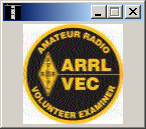
RSID: <<2018-08-06T07:34Z MFSK-32 @ 7730000+1500>>
RSID: <<2018-08-06T07:34Z MFSK-32 @ 7730000+1500>>
This issue is on my mind because I recently took a ham radio licensing exam, at
the annual HamHoliday, a ham radio convention in Oklahoma. I’m currently a
General class operator and I’ve been studying for the Extra class exam, so I
decided to take a shot at it (which
I was given an extra nudge to do so by the kind folks at the SCARS VE Testing
team from the Norman area, who provide the VE testing session free of charge,
rather than charging the customary $15 fee to cover expenses). Sadly I didn’t
pass, but I came close, missing
it by only 2 questions...so I will take it again, probably in September.
But while taking my exam, I got to visit with a fair number of other test
takers, a few folks like me taking Extra class tests, several taking general
class exams, but most taking Technician class exams. Lots of folks left the
testing room, ecstatic in their victory
over the test, but quite a few others left crushed by the experience,
discouraged and convinced that they were “stupid.”
The reality is that the folks who failed the exam are likely good folks who
would be conscientious and thoughtful operators, particularly if they had a good
elmer or mentor to work with them, but the test stands in their way. I’m sure
some of these folks just didn’t
study enough, but I think it is much more likely that many of those who had
failed, had studied their butts off, and are just bad test takers.
The licensing exam exists as a measure of minimal competency, but I wonder if it
really serves that purpose? Some of the test questions are relevant and helpful
but others are irrelevant, confusing or downright esoteric. Surely there could
be a better way to do this.
The ARRL has proposed some options and other commentators have done so as well.
Some ideas being discussed is a revival of the old Novice class, with an easier
entry-level test, as well as expanded HF privileges to Technicians to provide
more early excitement to new
hams. As expected the Grumpy Doomsdayers have attacked these ideas arguing that
this will cheap the hobby, but these folks are missing some key points.
First, there is nothing sacred about our current testing system. It has been
changed in the past and can be changed in the future.
And second, if the test is designed to weed out the problematic operators, it is
failing in this mission, primarily because most of the problematic operators out
there today are folks who have been on the air for decades. I’ve learned that
any time I hear racist
jokes, intentional interference and just general rudeness, it is rarely ever
coming from someone who is a new ham.
And finally, lot’s of folks have test-taking anxiety and many have learning
disabilities. Certainly these obstacles can be overcome by the stubbornly
committed, but these obstacles do push some away altogether and delay others
from entering the hobby.
So I say let’s be creative, let’s rethink the test.
2. The Cost
Ham radio can be done cheaply but it is not easy to do so. VHF/UHF is easier to
pull of on a budget, but HF is something else. What most hams would consider an
entry-level transceiver will run $500-1000. Certainly that is cheaper than what
some spend on their hobbies
but it is not chump change either, and it serves to keep a lot of folks out of
the hobby, not only young people but also retirees on a fixed income, as well as
middle aged folks who are just trying to make ends meet.
The grumpy doomsdayers tend to say “tough cookies,” mostly because they
fundamentally only want folks like themselves in the hobby. And unfortunately
some ham radio organizations and magazines have a conflict of interest on this
issue, since they depend on the
advertising dollars paid by the major equipment manufacturers, to pay the bills.
But this issue has to be addressed. Certainly some hams are very content to stay
with being VHF/UHF operators, focusing on public service in their communities
and chatting with their friends, but many folks, including SWL’s got into ham
radio because we wanted to be
on the shortwaves… we wanted to be heard hundreds of kilometers away, even on
the other side of the globe. So we have to find better ways to make the hobby
more affordable, especially to get on HF.
Which leads us to…
3.The Technical Challenges
As I just mentioned, cost is a barrier to getting into ham radio, and so
beginners have to find affordable entry points.
For VHF/UHF, Baofeng HT’s have been a game changer. The grumpy doomsdayers hate
them, but the reality is that for most hams in major metropolitan areas, the
Baofeng (if equipped with a better antenna, such as a longer Nagoya antenna)
will hit local repeaters, all for
a total investment of under $50. But if you live in a rural area and/or want to
do simplex work, the cheap HT’s can be frustrating. Still I’m glad I ignored the
grumps and started with them.
Sending Pic:150x139C;
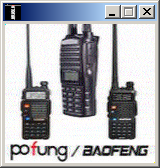
RSID: <<2018-08-06T07:42Z MFSK-32 @ 7730000+1500>>
RSID: <<2018-08-06T07:42Z MFSK-64 @ 7730000+1500>>
As for HF… there aren’t any easy solutions…
The cheapest HF transceivers are kit-built, but this is a big jump for a new ham
to take on, and so most will go with a Multi-mode/Multi-band radio that is
already built. But due to cost constraints, many of us will end up going QRP,
doing what I did and starting
with something like the Yaesu FT-817, a great radio by the way, but one that is
still QRP. On a good day, when the conditions are right, I can talk to someone
on the other side of the country via SSB, but on most days I struggle to be
heard on our local 10 meter net,
with the control operator being about 12 miles away. Of course, some insist that
CW is the only answer, but let’s be frank. Morse code is hard to learn and hard
to effectively operate.
Sending Pic:250x155C;
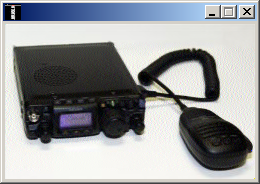
And what other options are there?
Remotes? --- Yes, they can be fun (I’ve used the ones from both
Remotehamradio.com and RCFORB) but
in most cases they are not cheap and frankly they are not as much fun as running
your own radio.
Thankfully two recent developments have helped to provide some hope for
financially challenged hams.
First, there are the weak signal digital modes, especially at this moment FT-8.
I know the grumpy doomsdayers hate these modes, but I love them. To actually
make cross-country and even DX contacts on 5 or less watts power, on a
consistent basis, is unbelievably
awesome…. It’s still not easy, but it is much, much easier than QRP SSB.
Sending Pic:200x200;
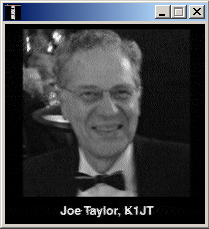
But secondly there are the new SDR
transceivers, some of which are kit built, but I hope in time will also be
available in pre-built and/or easily-assembled forms.
So… there’s hope.
What I want to close with is directed at any new hams out there, folks who have
passed their technician class exams but are considering their next steps, but
also for any SWL’s, shortwave listeners who are nervous about taking their exam…
I want to share some things that I wish someone had told me a few years ago,
when I was first starting in this crazy adventure…
1. Go cheap for VHF/UHF. --- Start off cheap. You can always get a fancier radio
down the road if you fall in love with VHF/UHF, but for now buy the cheap
Baofeng, Wouxun, etc. And don’t believe the grumps out there… they may not be
perfect, but they get the job
done.
2. But when you go cheap, be smart about it. --- The stock antenna on many
Baofengs is crap. I don’t know why, but these antennas are called rubber duckies,
and they are worthless. Instead spend $10 or so and get a better antenna, such
as a Nagoya. Also you’ll want
to spend another $10 to get a programming cable, so you can use the CHIRP
software to program your radio with all of your local repeaters.
3. Speaking of programming those Baofengs --- Most will let you program the
frequencies for NOAA weather radio, trains, GMRS, MURS, FRS, etc. Obviously you
can’t legally transmit on these frequencies, but you can listen (at least here
in the USA).
4. For HF, go cheap on antennas --- Seriously, a dipole wire antenna can do
wonders. Building your own is very do-able. But… you likely will need a tuner.
There are high priced ones out there, but you can find them new for under $100
from MFJ or used for even less
(my current tuner I got for $50 used).
4a. Batteries
5. For the transceiver --- No easy answers here. I love my Yaesu but I paid too
much for it. If I was starting new today, i would probably look at one of the
SDR-based kit builds.
6. For digital modes --- I’ve heard good things about the Signal Link and other
interfaces, but I ended up going with something much cheaper, the Wolfilink. It
is designed to link up a cell phone or tablet to a transceiver but with the
right audio cables and splitter
it can connect with a computer.
Sending Pic:200x125;
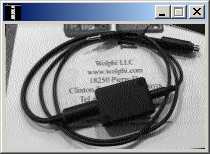
7. Be patient and set your own goals
--- Unless you are lucky and can afford a 100 watt radio right away, you can’t
judge yourself by comparing yourself to others. Instead set your own goals.
That’s it for this week.
Don’t forget, QSL reports are welcome at
broadspectrumradio@gmail.com.
And keep an eye out for this special event station, W5G:
RSID: <<2018-08-06T07:49Z
MFSK-64
@
7730000+1500>>
RSID: <<2018-08-06T07:49Z MFSK-64 @ 7730000+1500>>
Sending Pic:300x227;
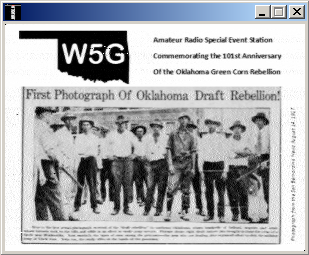
RSID: <<2018-08-06T07:51Z MFSK-64 @ 7730000+1500>>
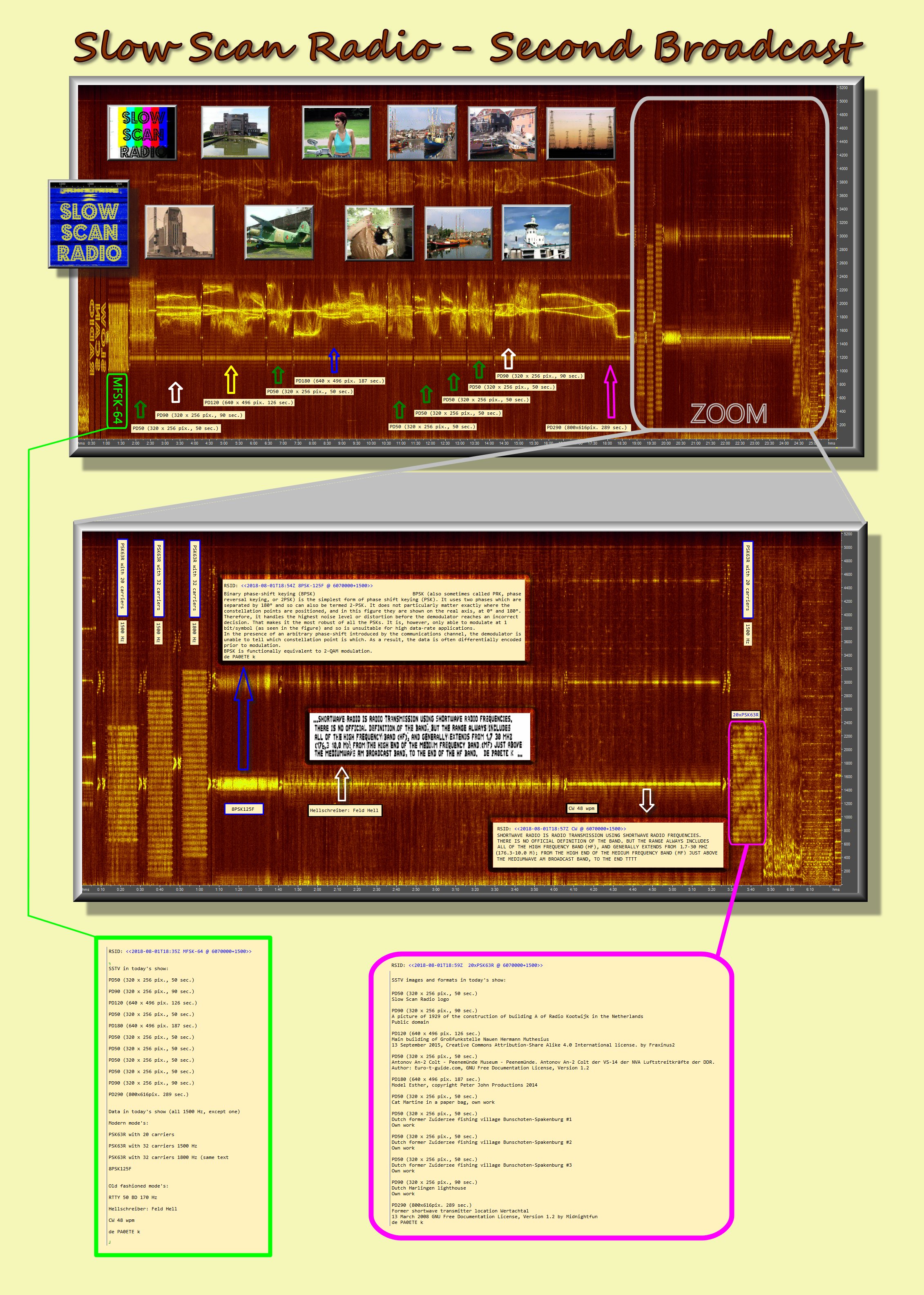
|
|
RSID: <<2018-08-01T18:35Z MFSK-64 @ 6070000+1500>>
SSTV in today's show:
PD50 (320 x 256 pix., 50 sec.)
PD90 (320 x 256 pix., 90 sec.)
PD120 (640 x 496 pix. 126 sec.)
PD50 (320 x 256 pix., 50 sec.)
PD180 (640 x 496 pix. 187 sec.)
PD50 (320 x 256 pix., 50 sec.)
PD50 (320 x 256 pix., 50 sec.)
PD50 (320 x 256 pix., 50 sec.)
PD50 (320 x 256 pix., 50 sec.)
PD90 (320 x 256 pix., 90 sec.)
PD290 (800x616pix. 289 sec.)
Data in today's show (all 1500 Hz, except one)
Modern mode's:
PSK63R with 20 carriers
PSK63R with 32 carriers 1500 Hz
PSK63R with 32 carriers 1800 Hz (same text
8PSK125F
Old fashioned mode's:
RTTY 50 BD 170 Hz
Hellschreiber: Feld Hell
CW 48 wpm
de PA0ETE k
RSID: <<2018-08-01T18:52Z 20xPSK63R @ 6070000+1500>>
Phase-shift keying
Phase-shift keying (PSK) is a digital modulation process which conveys data by
changing (modulating) the phase of a constant frequency reference signal (the
carrier wave). The modulation is accomplished by varying the sine and cosine
inputs at a precise time. It is widely used for wireless LANs, RFID and
Bluetooth communication.
Any digital modulation scheme uses a finite number of distinct signals to
represent digital data. PSK uses a finite number of phases, each assigned a
unique pattern of binary digits. Usually, each phase encodes an equal number of
bits. Each pattern of bits forms the symbol that is represented by the
particular phase. The demodulator, which is designed specifically for the
symbol-set used by the modulator, determines the phase of the received signal
and maps it back to the symbol it represents, thus recovering the original data.
This requires the receiver to be able to compare the phase of the received
signal to a reference signal – such a system is termed coherent (and referred to
as CPSK).
CPSK requires a complicated demodulator, because it must extract the reference
wave from the received signal and keep track of it, to compare each sample to.
Alternately, the phase shift of each symbol sent can be measured with respect to
the phase of the previous symbol sent. Because the symbols are encoded in the
difference in phase between successive samples, this is called differential
phase-shift keying (DPSK). DPSK can be significantly simpler to implement than
ordinary PSK, as it is a 'non-coherent' scheme, i.e. there is no need for the
demodulator to keep track of a reference wave. A trade-off is that it has more
demodulation errors.
de PA0ETE k
RSID: <<2018-08-01T18:53Z 32xPSK63R @ 6070000+1500>>
Introduction
There are three major classes of digital modulation techniques used for
transmission of digitally represented data:
Amplitude-shift keying (ASK)
Frequency-shift keying (FSK)
Phase-shift keying (PSK)
All convey data by changing some aspect of a base signal, the carrier wave
(usually a sinusoid), in response to a data signal. In the case of PSK, the
phase is changed to represent the data signal. There are two fundamental ways of
utilizing the phase of a signal in
this way:
By viewing the phase itself as conveying the information, in which case the
demodulator must have a reference signal to compare the received signal's phase
against; or
By viewing the change in the phase as conveying information – differential
schemes, some of which do not need a reference carrier (to a certain extent).
A convenient method to represent PSK schemes is on a constellation diagram. This
shows the points in the complex plane where, in this context, the real and
imaginary axes are termed the in-phase and quadrature axes respectively due to
their 90° separation. Such a
representation on perpendicular axes lends itself to straightforward
implementation. The amplitude of each point along the in-phase axis is used to
modulate a cosine (or sine) wave and the amplitude along the quadrature axis to
modulate a sine (or cosine) wave. By
convention, in-phase modulates cosine and quadrature modulates sine.
In PSK, the constellation points chosen are usually positioned with uniform
angular spacing around a circle. This gives maximum phase-separation between
adjacent points and thus the best immunity to corruption. They are positioned on
a circle so that they can all be
transmitted with the same energy. In this way, the moduli of the complex numbers
they represent will be the same and thus so will the amplitudes needed for the
cosine and sine waves. Two common examples are "binary phase-shift keying" (BPSK)
which uses two phases,
and "quadrature phase-shift keying" (QPSK) which uses four phases, although any
number of phases may be used. Since the data to be conveyed are usually binary,
the PSK scheme is usually designed with the number of constellation points being
a power of two.
de PA0ETE k
RSID: <<2018-08-01T18:53Z 32xPSK63R @ 6070000+1800>>
Introduction
There are three major classes of digital modulation techniques used for
transmission of digitally represented data:
Amplitude-shift keying (ASK)
Frequency-shift keying (FSK)
Phase-shift keying (PSK)
All convey data by changing some aspect of a base signal, the carrier wave
(usually a sinusoid), in response to a data signal. In the case of PSK, the
phase is changed to represent the data signal. There are two fundamental ways of
utilizing the phase of a signal in
this way:
By viewing the phase itself as conveying the information, in which case the
demodulator must have a reference signal to compare the received signal's phase
against; or
By viewing the change in the phase as conveying information – differential
schemes, some of which do not need a reference carrier (to a certain extent).
A convenient method to represent PSK schemes is on a constellation diagram. This
shows the points in the complex plane where, in this context, the real and
imaginary axes are termed the in-phase and quadrature axes respectively due to
their 90° separation. Such a
representation on perpendicular axes lends itself to straightforward
implementation. The amplitude of each point along the in-phase axis is used to
modulate a cosine (or sine) wave and the amplitude along the quadrature axis to
modulate a sine (or cosine) wave. By
convention, in-phase modulates cosine and quadrature modulates sine.
In PSK, the constellation points chosen are usually positioned with uniform
angular spacing around a circle. This gives maximum phase-separation between
adjacent points and thus the best immunity to corruption. They are positioned on
a circle so that they can all be
transmitted with the same energy. In this way, the moduli of the complex numbers
they represent will be the same and thus so will the amplitudes needed for the
cosine and sine waves. Two common examples are "binary phase-shift keying" (BPSK)
which uses two phases,
and "quadrature phase-shift keying" (QPSK) which uses four phases, although any
number of phases may be used. Since the data to be conveyed are usually binary,
the PSK scheme is usually designed with the number of constellation points being
a power of two.
de PA0ETE k
RSID: <<2018-08-01T18:54Z 8PSK-125F @ 6070000+1500>>
BPSK (also sometimes called PRK, phase reversal keying, or 2PSK) is the simplest form of phase shift keying (PSK). It uses two phases which are separated by 180° and so can also be termed 2-PSK. It does not particularly matter exactly where the constellation points
are positioned, and in this figure they are shown on the real axis, at 0° and 180°. Therefore, it handles the highest noise level or distortion before the demodulator reaches an incorrect decision. That makes it the most robust of all the PSKs. It is, however, only
able to modulate at 1 bit/symbol (as seen in the figure) and so is unsuitable for high data-rate applications.
In the presence of an arbitrary phase-shift introduced by the communications
channel, the demodulator is unable to tell which constellation point is which.
As a result, the data is often differentially encoded prior to modulation.
BPSK is functionally equivalent to 2-QAM modulation.
de PA0ETE k
RSID: <<2018-08-01T18:54Z
Feld Hell @
6070000+1500>>

RSID: <<2018-08-01T18:54Z CW @ 6070000+1500>>
SHORTWAVE RADIO IS RADIO TRANSMISSION USING SHORTWAVE RADIO FREQUENCIES. THERE
IS NO OFFICIAL DEFINITION OF THE BAND, BUT THE RANGE ALWAYS INCLUDES
ALL OF THE HIGH FREQUENCY BAND (HF), AND GENERALLY EXTENDS FROM 1,7-30 MHZ (176.3 -10.0 M); FROM THE HIGH END OF THE MEDIUM FREQUENCY BAND (MF) JUST ABOVE
THE MEDIUMWAVE AM BROADCAST BAND, TO THE END TTTT
RSID: <<2018-08-01T18:59Z 20xPSK63R @ 6070000+1500>>
SSTV images and formats in today's
show:
PD50 (320 x 256 pix., 50 sec.)
Slow Scan Radio logo
PD90 (320 x 256 pix., 90 sec.)
A picture of 1929 of the construction of building A of Radio Kootwijk in the
Netherlands
Public domain
PD120 (640 x 496 pix. 126 sec.)
Main building of Großfunkstelle Nauen Hermann Muthesius
13 September 2015, Creative Commons Attribution-Share Alike 4.0 International
license. by Fraxinus2
PD50 (320 x 256 pix., 50 sec.)
Antonov An-2 Colt - Peenemünde Museum - Peenemünde. Antonov An-2 Colt der VS-14
der NVA Luftstreitkräfte der DDR.
Author: Euro-t-guide.com, GNU Free Documentation License, Version 1.2
PD180 (640 x 496 pix. 187 sec.)
Model Esther, copyright Peter John Productions 2014
PD50 (320 x 256 pix., 50 sec.)
Cat Martine in a paper bag, own work
PD50 (320 x 256 pix., 50 sec.)
Dutch former Zuiderzee fishing village Bunschoten-Spakenburg #1
Own work
PD50 (320 x 256 pix., 50 sec.)
Dutch former Zuiderzee fishing village Bunschoten-Spakenburg #2
Own work
PD50 (320 x 256 pix., 50 sec.)
Dutch former Zuiderzee fishing village Bunschoten-Spakenburg #3
Own work
PD90 (320 x 256 pix., 90 sec.)
Dutch Harlingen lighthouse
Own work
PD290 (800x616pix. 289 sec.)
Former shortwave transmitter location Wertachtal
13 March 2008 GNU Free Documentation License, Version 1.2 by Midnightfun
de PA0ETE k